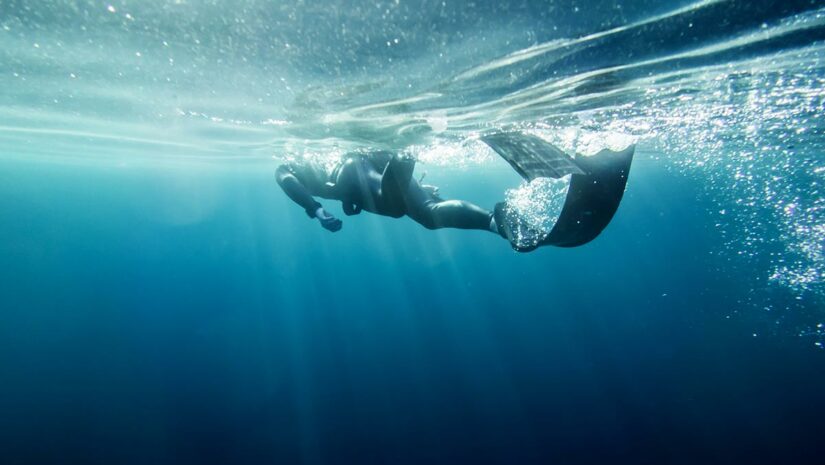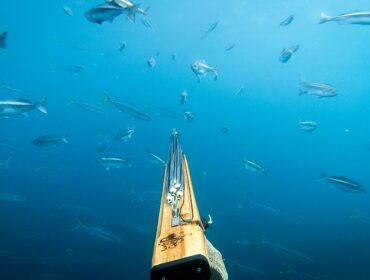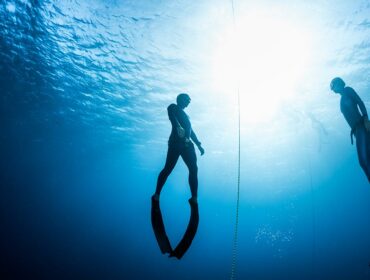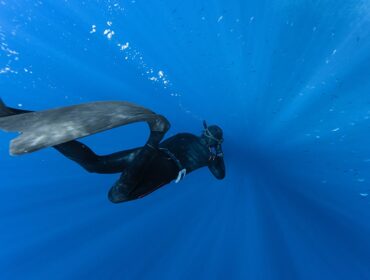Spearfishing is both a recreational activity and a competitive sport that requires specialized gear to enhance underwater movement and improve performance. One essential piece of equipment in spearfishing is fins. Your best spearfishing fins aren’t just extensions of your feet; they’re your underwater wings. The strategic use of fins for spearfishing allows users to maneuver with precision, conserve energy, and dive deeper for extended periods.
Understanding the different types of spearfishing fins available on the market is crucial for divers looking to optimize their experience and achieve their goals.
Role of Fins in Underwater Movement
One of the primary functions of spearfishing fins is to generate propulsion. Through a combination of flutter kicks and frog kicks, divers propel themselves forward, backward, and side to side. The dive fins act like the wings of a bird, converting the diver’s muscular effort into forward motion. This efficient transfer of energy helps conserve oxygen and increases overall endurance in the water.
Moreover, quality spearfishing fins also play a crucial role in maintaining stability and control underwater. The design of fins allows divers to maintain proper body positioning, preventing them from drifting off course or getting caught in strong currents. By using their fins to adjust their body angle and direction, spearos can navigate through the water with ease and precision.
Furthermore, fins provide divers with the ability to make quick turns and sudden changes in direction. This agility is particularly important when pursuing fast-moving fish or when trying to avoid obstacles in the underwater environment. The fins’ flexibility and responsiveness enable spearfishers to react swiftly, ensuring they can keep up with their targets or swiftly evade any potential dangers.
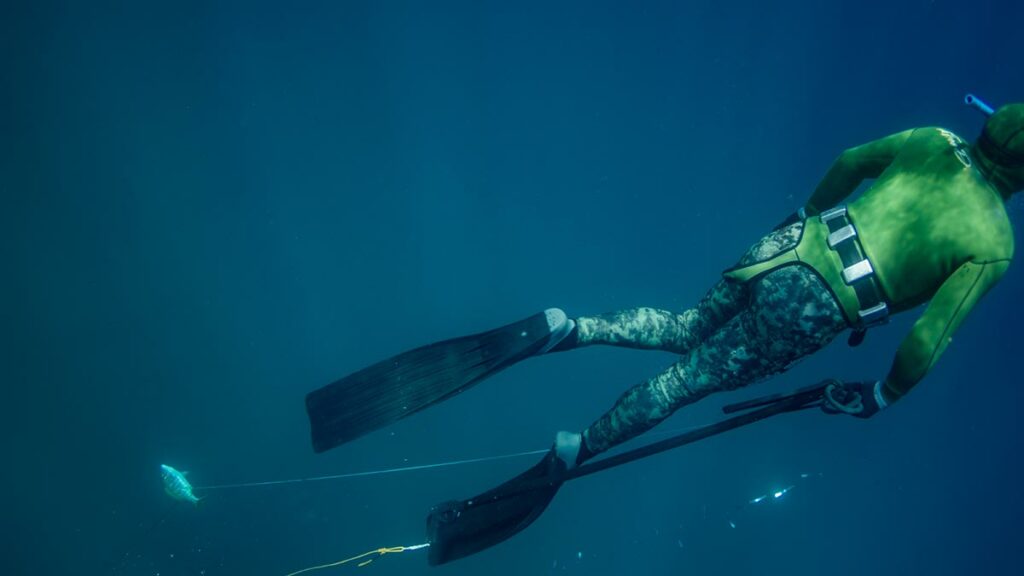
Factors Affecting the Performance of Spearfishing Fins
The right pair of spearfishing fins can significantly enhance a diver’s performance. Fins that fit well and are suitable for the diving conditions can improve speed, maneuverability, and agility underwater. Additionally, the right fins can help minimize fatigue, allowing spearfishers to stay submerged for longer durations and cover greater distances while pursuing their targets.
When selecting fins, spearos consider various factors such as blade length, stiffness, and foot pocket design.
Blade Length
There are advantages of long blade fins in spearfishing. Long blades help in covering more distance with less effort, crucial when you’re in pursuit of a speedy fish. Blade length also affects the amount of thrust generated with each kick, with longer blades providing more power but requiring more effort.
Blade Stiffness
Stiffness determines the responsiveness of the spearfishing fins, with stiffer fins delivering quicker acceleration but requiring stronger leg muscles.
Foot Pocket
The foot pocket fit and comfort is crucial for spearfishing fins. Poorly fitting foot pocket can cause discomfort and hinder performance.
Diving Conditions
Furthermore, the diving conditions also influence the choice of fins.
In calm waters, spearos may opt for longer and stiffer fins to maximize propulsion and speed. In contrast, in areas with strong currents, shorter and more flexible fins may be preferred to provide better maneuverability and control.
It is important for spearfishers to try out different fins and find the ones that suit their individual preferences and diving style.
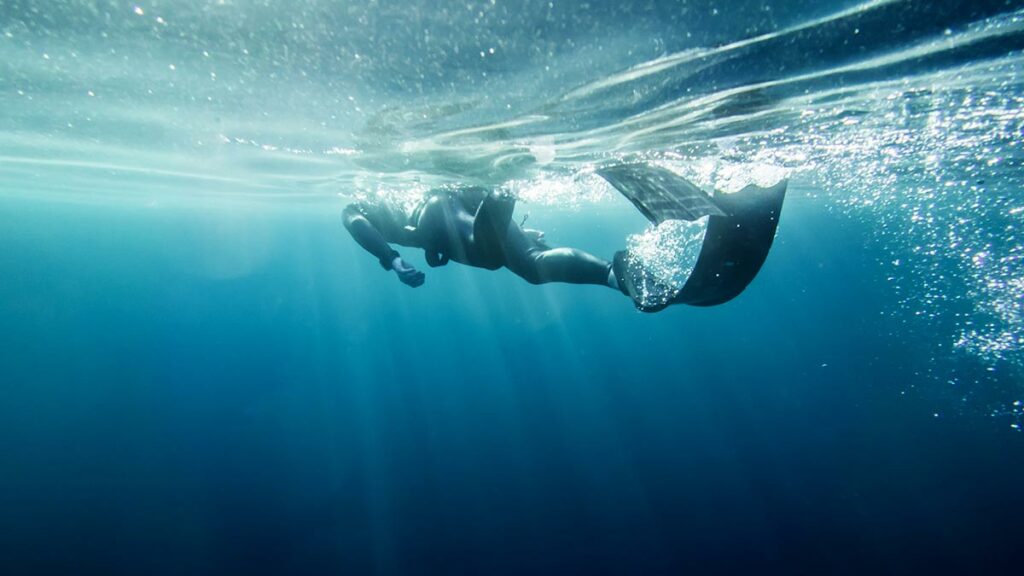
The Anatomy of Spearfishing Fins
Understanding the different components of spearfishing fins is essential when selecting the right pair for your needs.
Let’s take a closer look at the various aspects that make up spearfishing fins.
Material
Spearfishing fins are typically made from different materials. Each material offers different characteristics regarding stiffness, flexibility, and buoyancy.
Plastic Fins: Affordable and Reliable
Plastic fins are best spearfishing fins for beginners. They’re durable and provide a decent amount of thrust, offering a glimpse into the world of spearfishing without a hefty investment. However, for prolonged use or deeper dives, you might find them lacking in flexibility and performance.
Fiberglass Fins: The Middle Ground
A step up from plastic, fiberglass fins strike a balance between cost and performance. As you advance and crave more from your dives, fiberglass fins become your best friends. Offering a blend of flexibility and power, they allow for swift turns and powerful chases.
Carbon Fiber Fins: Premium Performance
For those who live and breathe spearfishing, carbon fiber fins are a dream. They combine lightness with unparalleled power. With them, each kick generates maximum thrust, ensuring you’re always ahead in the chase.
Design
The design of the fins also plays a significant role in their performance.
Blade shape and curvature are carefully engineered to optimize thrust and minimize drag. Some fins feature a longer blade with a wider surface area, providing maximum propulsion, while others have a shorter blade for increased maneuverability in tight spaces.
It’s important to choose fins that align with your diving style and personal preferences.
Size and Fit
The size and fit of the fins can greatly affect a diver’s comfort and performance. Fins that are too small may restrict movement and lead to cramping, while fins that are too large can cause drag and reduce maneuverability. To find the right fit, divers should consider their foot size, boot thickness, and individual foot characteristics.
Additionally, some spearfishing fins come with adjustable straps or buckles, allowing divers to fine-tune the fit to their liking. These adjustable features can be particularly beneficial for divers who may have different foot sizes or prefer to wear thicker booties in colder water.
Overall, selecting the right pair of spearfishing fins requires careful consideration of material, design, size, and fit. By understanding the anatomy of spearfishing fins and how each component contributes to performance, divers can make an informed decision that enhances their underwater experience.

Diving into Different Types of Spearfishing Fins
There are several types of spearfishing fins available, each designed to cater to specific diving styles and preferences.
Full Foot Fins
One popular type of spearfishing fins is the full foot fins. These fins are lightweight and compact, enabling the diver to move more swiftly through the water. Their streamlined design reduces drag and allows for efficient kicking. These fins are ideal for warm-water diving and snorkeling but may not provide enough insulation in colder conditions.
When using full foot fins, divers can enjoy the freedom of movement and the ability to navigate tight spaces with ease. The snug fit of these fins ensures that they stay securely on the diver’s feet, providing maximum control and maneuverability. Some full foot fins also come with specialized features, such as drainage holes or reinforced soles, to enhance their performance and durability.
Open Heel Fins
Another popular option for spearfishing fins is the open heel fins. Unlike full foot fins, open heel fins have an adjustable strap system that allows divers to wear them with booties. This design provides a more secure and comfortable fit, making them suitable for a wider range of diving conditions. Open heel fins offer better insulation and are a popular choice amongst spearfishers who dive in both warm and cold waters.
The adjustable strap system of open heel fins allows divers to customize the fit according to their foot size and bootie thickness. This feature ensures a snug and comfortable fit, reducing the risk of blisters or discomfort during long dives. The added insulation provided by booties also makes open heel fins suitable for colder water temperatures, allowing divers to stay in the water for longer periods without getting cold.
Freediving Fins
For those who are serious about spearfishing and freediving, specialized fins known as freediving fins are the way to go. These fins are longer and generally narrower than standard spearfishing fins. The design of freediving fins is focused on maximizing efficiency and performance during deep dives, where every kick counts.
Freediving fins often come with innovative features, such as split blades or channels, to optimize propulsion and reduce drag in the water. These features allow divers to generate more power with each kick, enabling them to conserve energy and dive deeper for longer periods. The longer length of freediving fins also helps in maintaining stability and control during descents and ascents.
Whether you prefer the lightweight and compact design of full foot fins, the versatility of open heel fins, or the performance-focused features of freediving fins, choosing the right pair of fins can greatly enhance your spearfishing adventures.
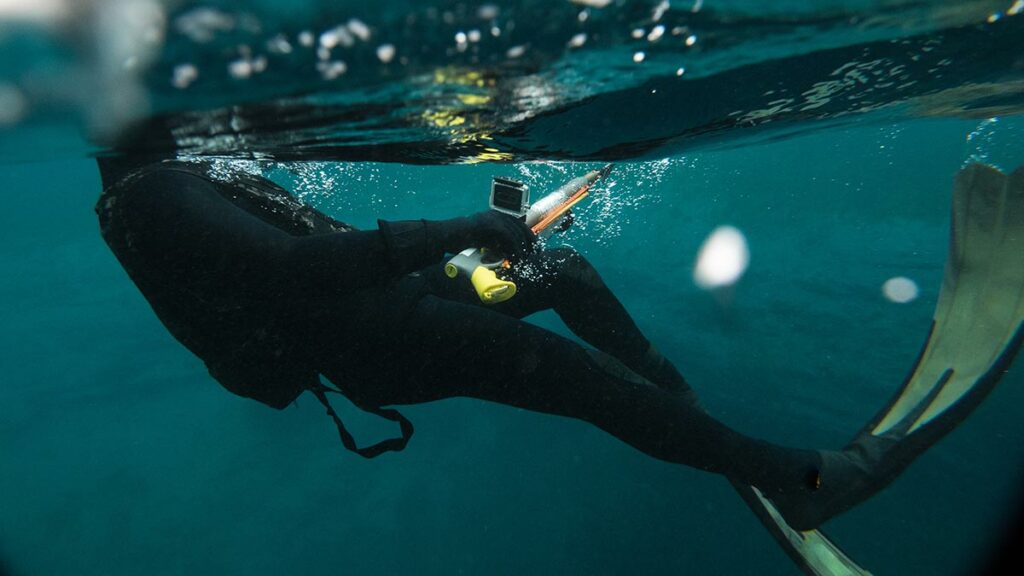
How to Improve Finning Techniques for Spearfishing
To maximize the efficiency of their spearfishing fins, divers need to master various finning techniques. These techniques help divers move smoothly through the water, conserve energy, and avoid unnecessary strain on their muscles.
Flutter Kick
One of the most commonly used finning techniques in spearfishing is the flutter kick. This technique involves alternating straight-legged kicks with the power coming from the hips. The flutter kick allows divers to cover long distances with minimal effort and is ideal for chasing fast-moving prey.
Frog Kick
Another popular finning technique is the frog kick. This technique involves bending the knees and pushing the fins outwards in a motion similar to that of a frog. The frog kick provides greater maneuverability and control, making it suitable for navigating through tight spaces and avoiding obstacles.
Helicopter Turn
For those tight situations where precision is needed, the helicopter turn comes to the rescue. This technique involves using one fin to push water in one direction while the other fin is used to stabilize. The result is a tight, controlled turn that allows divers to change direction quickly and efficiently.
Reverse Frog Kick
When a diver needs to move backward, the reverse frog kick is the go-to technique. This kick involves bending the knees and pushing the fins inward in a motion opposite to that of the frog kick. The reverse frog kick provides a controlled backward motion, allowing divers to avoid obstacles or position themselves better for a shot.
How to Choose the Right Size Spearfishing Fins
When selecting fins, there are several factors that you should take into account to ensure that you make the best choice for your needs.
Preference & Comfort
One of the first things to consider is your personal preference. Everyone has their own unique style and comfort level, so it’s important to choose fins that feel comfortable and natural to you.
Diving Style
In addition to personal preference, your diving style should also be taken into consideration. Some divers may prefer more rigid fins for powerful kicks, which can provide greater propulsion and speed in the water. On the other hand, some divers may opt for more flexible fins, which offer better maneuverability and control. It’s important to find a balance between comfort, performance, and your specific diving style.
Budget
Of course, budget is another important factor to consider when selecting spearfishing fins. Fins can vary greatly in price, so it’s important to determine how much you are willing to invest in this piece of equipment. Keep in mind that while more expensive fins may offer advanced features and technologies, there are also affordable options available that can still meet your needs.
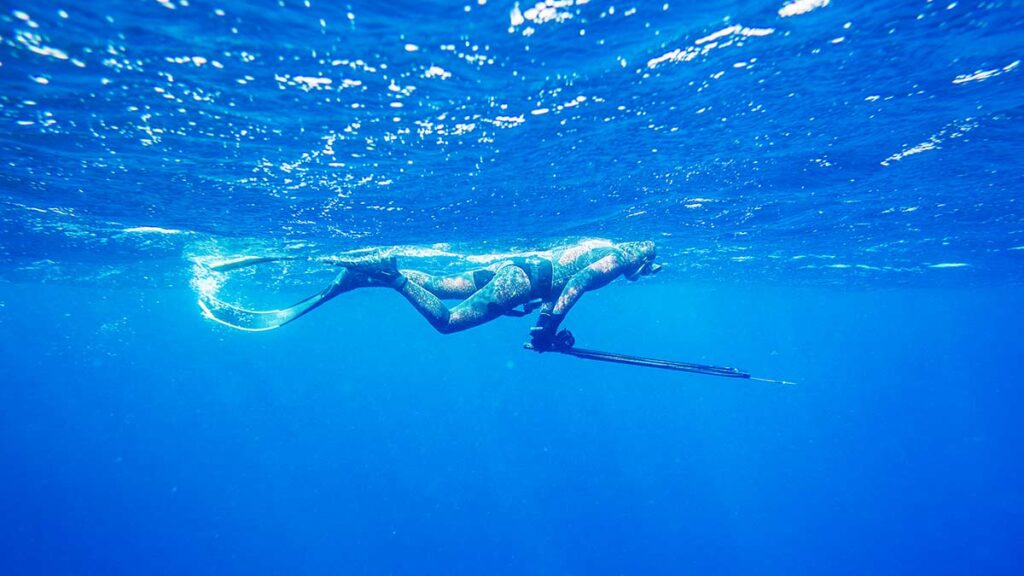
Matching Fins to Diving Conditions
Another crucial aspect to consider when choosing spearfishing fins is the diving conditions in which you will be using them. The specific conditions of your diving locations can greatly influence the type of fins that will be most suitable for you.
Warm Water
If you are planning to dive in warmer waters, lightweight and compact fins may be a priority. These types of fins are designed to provide maximum efficiency and minimize drag, allowing you to move through the water with ease. Additionally, fins with open heel designs and adjustable straps can be beneficial in warmer waters, as they allow for easy donning and doffing, as well as the ability to wear them with neoprene socks for added comfort.
Cold Water
On the other hand, if you will be diving in colder waters, you may need fins with insulation properties to help keep your feet warm. These fins are typically made with thicker materials or feature additional insulation layers to provide thermal protection. It’s important to research and consider the specific conditions of your diving locations to ensure that you choose fins that will keep you comfortable and safe.
Maintenance Tips for Spearfishing Fins
Proper maintenance and care can prolong the lifespan of spearfishing fins and ensure optimal performance.
Cleaning and Storage
Rinsing the fins with fresh water after each dive is essential to remove salt, sand, and other debris. Storing the fins in a cool and dry place, away from direct sunlight, helps prevent degradation of materials and maintains their shape.
Repair and Replacement
If fins become damaged or worn out, it’s important to assess whether they can be repaired or if it’s necessary to replace them. Minor repairs, such as replacing straps or buckles, can often be done by the diver themselves. However, for more significant damages or wear, it is recommended to consult with a professional to determine the best course of action.
Conclusion
Spearfishing fins are invaluable tools that enhance a diver’s underwater movement and overall performance. By considering factors such as personal preference, diving style, budget, and matching the fins to the diving conditions, you can make an informed choice that will enhance your spearfishing experience. So take your time, do your research, and choose fins that will help you dive with confidence and efficiency.

